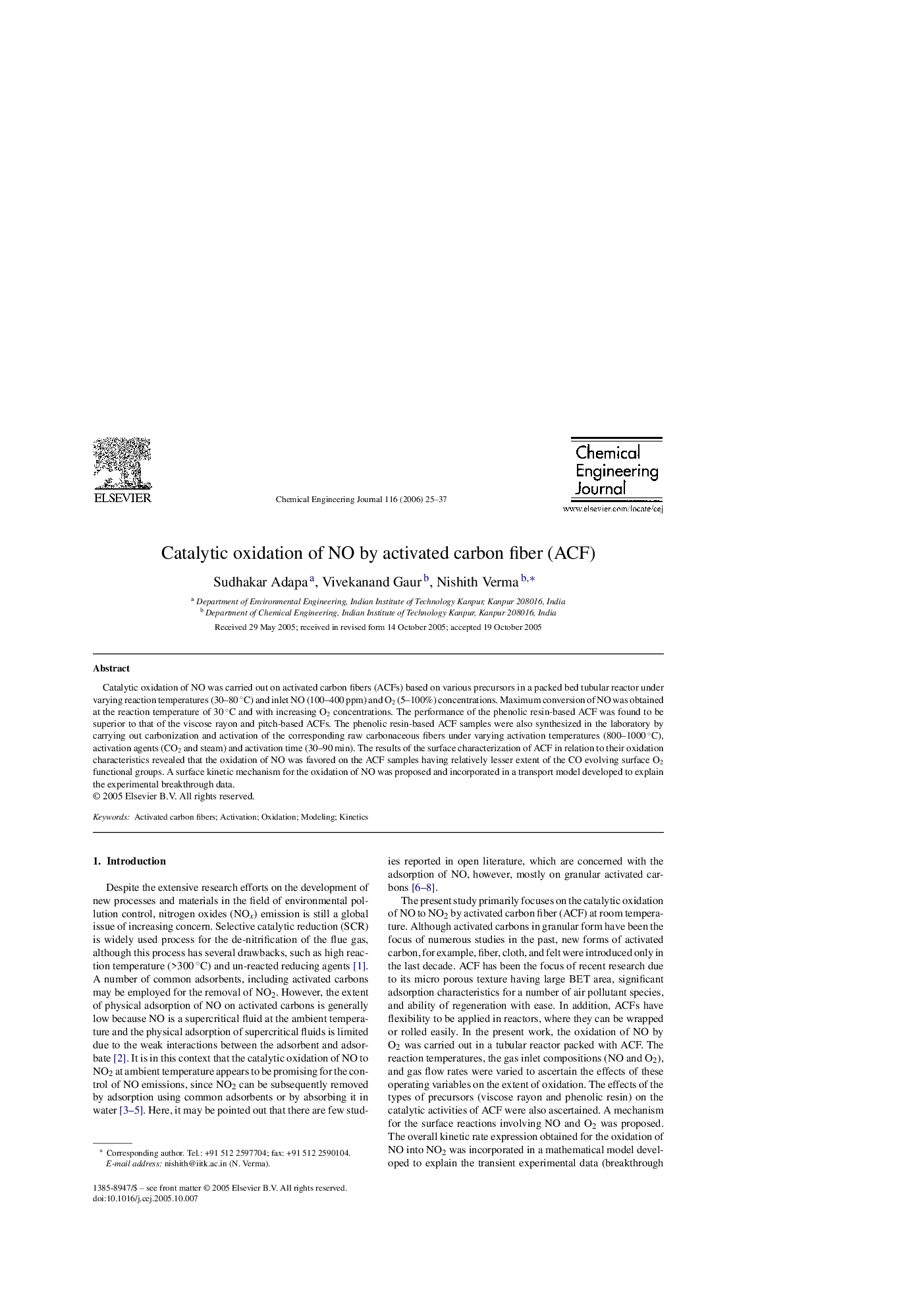| Article ID | Journal | Published Year | Pages | File Type |
|---|---|---|---|---|
| 154324 | Chemical Engineering Journal | 2006 | 13 Pages |
Catalytic oxidation of NO was carried out on activated carbon fibers (ACFs) based on various precursors in a packed bed tubular reactor under varying reaction temperatures (30–80 °C) and inlet NO (100–400 ppm) and O2 (5–100%) concentrations. Maximum conversion of NO was obtained at the reaction temperature of 30 °C and with increasing O2 concentrations. The performance of the phenolic resin-based ACF was found to be superior to that of the viscose rayon and pitch-based ACFs. The phenolic resin-based ACF samples were also synthesized in the laboratory by carrying out carbonization and activation of the corresponding raw carbonaceous fibers under varying activation temperatures (800–1000 °C), activation agents (CO2 and steam) and activation time (30–90 min). The results of the surface characterization of ACF in relation to their oxidation characteristics revealed that the oxidation of NO was favored on the ACF samples having relatively lesser extent of the CO evolving surface O2 functional groups. A surface kinetic mechanism for the oxidation of NO was proposed and incorporated in a transport model developed to explain the experimental breakthrough data.
